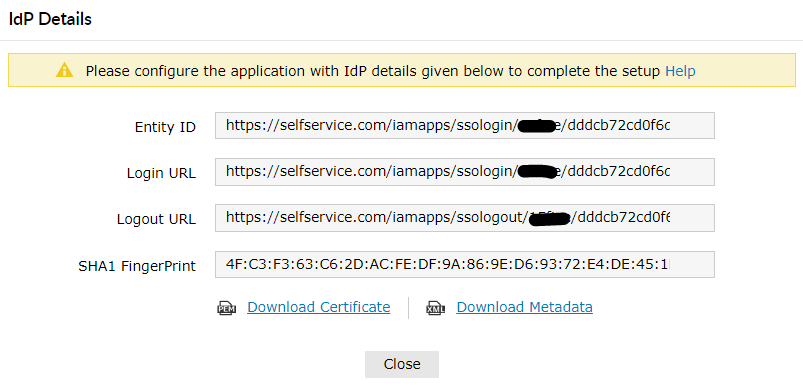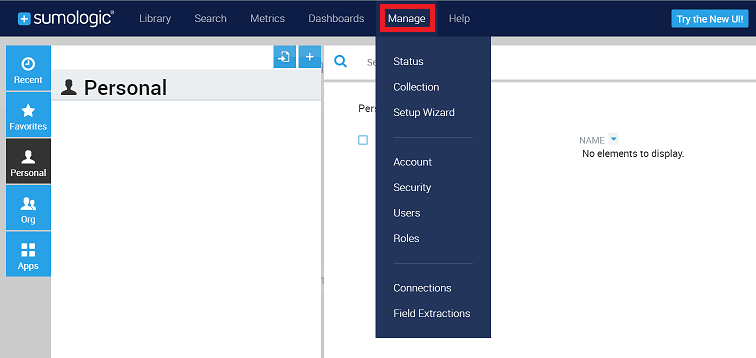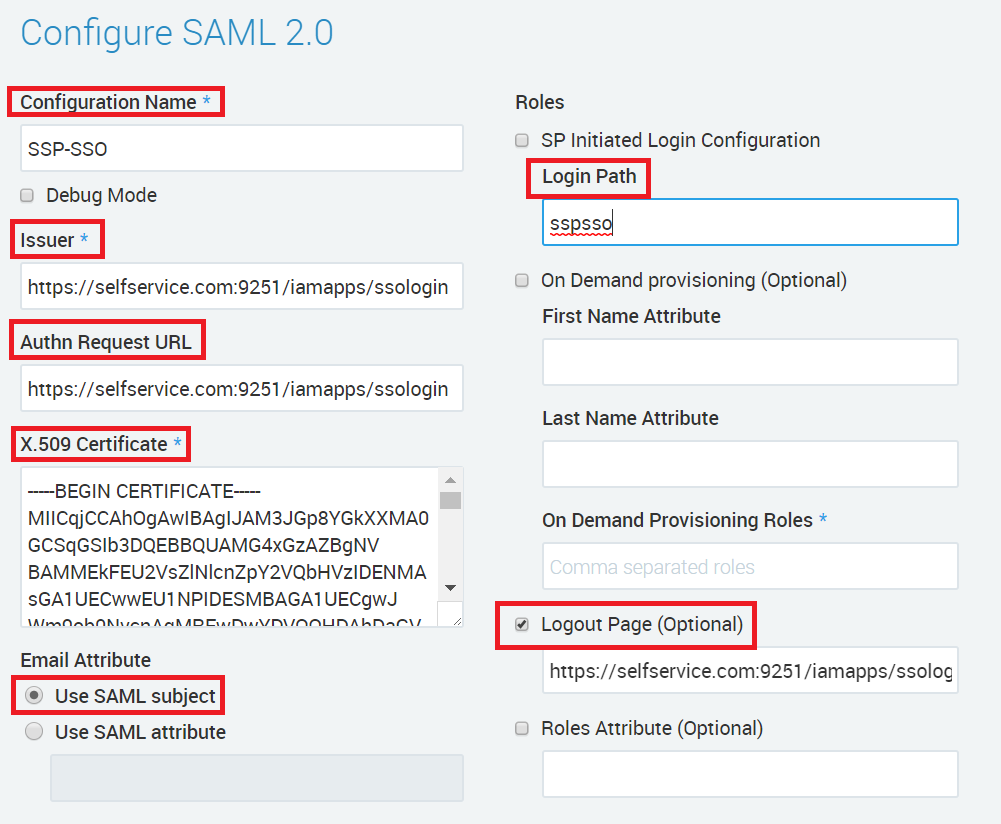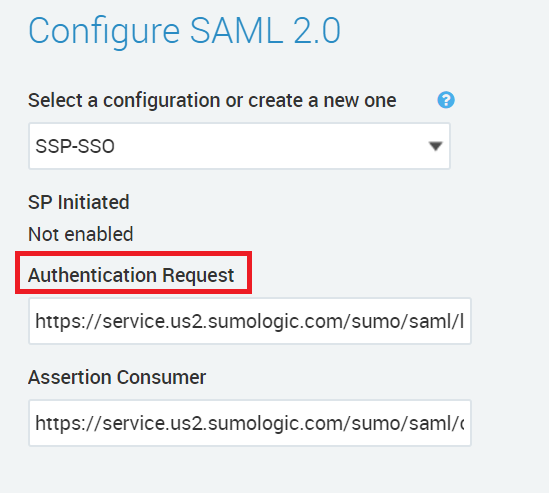Configuring SAML SSO for SumoLogic
These steps will guide you through setting up the single sign-on functionality between ADSelfService Plus and SumoLogic.
Prerequisite
-
Log in to ADSelfService Plus as an administrator.
- Navigate to Configuration → Self-Service → Password Sync/Single Sign On → Add Application, and select SumoLogic from the applications displayed.
Note: You can also find SumoLogic application that you need from the search bar located in the left pane or the alphabet wise navigation option in the right pane.
-
Click IdP details in the top-right corner of the screen.
-
In the pop-up that appears, copy the Login URL and download the SSO certificate by clicking on the Download SSO Certificate button.

SumoLogic (Service Provider) configuration steps
-
Login to SumoLogic portal with an administrator’s credentials.
-
Navigate to Manage → Security.

-
Click on the SAML button in the topright corner of the screen.

-
In the Configuration Name field, enter an identification name.
-
In both the Issuer and Authn Request URL fields, enter the Login URL copied in the Step 4 of Prerequsite.
Note:
The login URL must be in the format https://domainname.com/*

-
Open the SSO certificate downloaded (rsacert.pem) in Step 4 of Prerequisite and paste its content in the X.509 Certificate field.
-
In the Email Attribute field, select “Use SAML subject”.
-
Mark the check-box against SP initiated Login Configuration in the Roles field. In the Login Path field, enter a login path (for example: sspsso).
-
Click Save to complete the configuration.
-
Click on the SAML button in the topright corner of the screen.
-
Copy the value in the Authentication Request field.

ADSelfService Plus (Identity Provider) configuration steps
-
Now, switch to ADSelfService Plus’ SumoLogic configuration page.
-
Enter the Application Name and Description.
-
In the Assign Policies field, select the policies for which SSO need to be enabled.
Note:ADSelfService Plus allows you to create OU and group-based policies for your AD domains. To create a policy, go to Configuration → Self-Service → Policy Configuration → Add New Policy.
-
Select Enable Single Sign-On.
-
Enter the Domain Name of your SumoLogic account. For example, if you use johndoe@thinktodaytech.com to log in to SumoLogic, then thinktodaytech.com is the domain name.
-
In the SAML Redirect URL field, enter the value you copied in Step 11 of SumoLogic configuration.
- In the Name ID Format field, choose the format for the user login attribute value specific to the application.
Note: Use Unspecified as the default option if you are unsure about the format of the login attribute value used by the application
-
Click Add Application
Your users should now be able to sign in to SumoLogic through ADSelfService Plus.
Note:
For Sumologic, only IDP initiated flow is supported.
Don't see what you're looking for?
-
Visit our community
Post your questions in the forum.
-
Request additional resources
Send us your requirements.
-
Need implementation assistance?
Try OnboardPro




